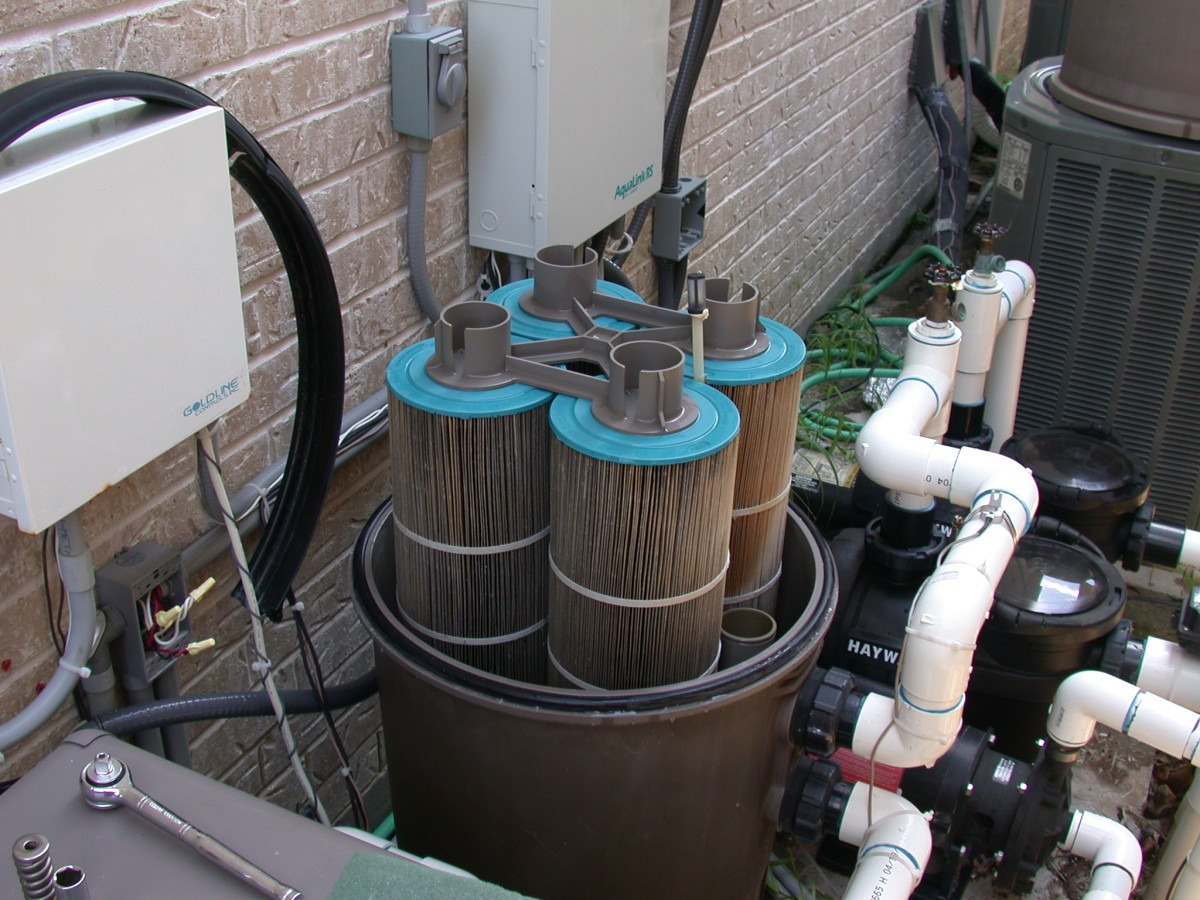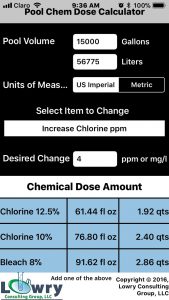You wanted a hot tub, and you got one! But that’s not it. There’s no point in owning one of the finest hot tubs if you don’t take care and maintain it too.
Take for an example- you bought a sedan, wouldn’t you service it every six months or so to maintain its longevity? The same goes for your spa. Enjoying your swim spa every weekend is great, but this can turn into a nightmare when you find your spa water being cloudy and smelly.
Dry Acid Dosage Charts (Note: ≈ 2.5 pounds of dry acid equals 1 quart of muriatic acid) Lowering pH These are very general guidelines. However, DO NOT add any more than indicated in any single application. Dry Acid for POOLS Gallons in Pool pH 120,000 60,000 30,000 15,000 10,000 7.6-7.8 11.2 lbs 5.6 lbs 2.8 lbs 1.4 lbs 15 oz. To lower the alkalinity by 10ppm, you may need 1.6 lbs sodium bisulfate or 1.23 liters of muriatic acid for every 10,000 gallons of water. Sometimes, when lowering alkalinity, the pH level decreases drastically. So, to increase the pH of the water without increasing the TA, you need to use the process of Aeration.
For your hot tub to last longer and remain exactly the way you bought it, you need to maintain the pH and alkalinity level of the water. If you’re a hot tub beginner, you will have questions like, “what is alkalinity?”, “Aren’t pH and alkalinity levels the same?”
The terms ‘pH level’ and ‘alkalinity level’ are thrown around casually, and this can confuse anyone who’s not familiar with maintaining the hot tub water chemistry. But no need to worry, you don’t have to get into the depths of chemistry and blow off your mind. We try our best to explain in a simple language, what they are, why they matter and how to balance them the correct way.
Now, what is alkalinity?
Before you balance the pH levels of the water, you need to deal with the alkalinity balance. If your alkalinity level is off the charts, you’ll never be able to balance the pH level of the water of the hot tub. Alkalinity and pH are like first cousins, they go hand in hand, affecting and getting affected by each other.
Muriatic Acid Dosage Charts Lowering PH
Total Alkalinity (TA), sometimes referred to as a “buffer,” is the measure of your spa’s water’s ability to neutralize acids. Checking the alkalinity level is the first and vital step towards balancing the pH level. Now, what is pH scale and how it is affected by alkalinity, we’ll get into that afterward.
TA, unlike pH level, is measured in PPM (parts per million). Its role is to provide a balance in mineral content, which blocks any damage to the surfaces.
Why does proper alkalinity level matter?
Anything in the extreme is always wrong. The same way, high alkalinity or too low alkalinity is not only bad for your spa but also harmful for your skin. An unbalanced alkaline level diminishes your hot tub’s appearance, making it dull-looking and giving the water a greenish hue.
Low alkalinity is the riskiest among the two extremes. It causes significant fluctuations in the pH because it cannot curb the effects of acids.
If they are not kept in check, it can cause corrosion to your spa parts like heaters and water jets.
What happens if the alkalinity level is high?
High alkalinity also causes green water, as it reduces the effects of sanitizers like chlorine and bromine, which prevents the build-up of algae. Chandamama stories in telugu pdf.
High alkalinity causes high pH levels, which in result increases calcium build-up, which makes the water cloudy and causes scale to form on the surfaces of the tub; this can harm your spa’s jets and filters as they are likely to get clogged.
Steps to lower alkalinity in your hot tub

How Much Muriatic Acid To Lower Ph In Hot Tub
Balanced TA levels help in a balanced pH level of water. The usual range of pH level of the water in the hot tub should be within the scope of 7.2 to 7.8, ideal being 7.4 to 7.6. Total alkalinity should be at 80-120ppm.
- The first step is to test the hot tub water’s alkalinity with a test strip. You have to place the piece in the water and compare the color on it regarding the colors showed on the kit. It will tell you to either raise or lower the TA in your spa.
- If your hot tub water has high alkalinity, then you need to lower the level by using chemicals such as liquid muriatic acid (which is hydrochloric acid diluted) or sodium bisulfate. Make sure to read proper proportions before adding it to the water. E.g. for 1,000 gallons of water, you need to use 3.5 oz or 0.21 lbs. of sodium bisulfate to lower water alkalinity by 10ppm. So, to lower the TA by 20ppm, use 6.8 oz or 0.43 lbs; to lower by 30ppm, use 10.2 oz or 0.64 lbs.
- Once you get the correct amount, make sure to circulate your tub and pour the sodium bisulfate in the hot tub. Leave it for 20 minutes and turn off the spa. The acid, when combined with water, decreases total alkalinity and maintains pH level.
- Once the water stops moving, leave the hot tub open for an hour for the hot tub water to breathe appropriately. Test the water again. If the alkalinity is not lowered, repeat the process.
- If you achieved the desired alkalinity, test the water again after 24 hours. After this, check the pH levels with pH test strips and see if it needs to be balanced.

What is pH, and what are the issues related to it?
PH is the ‘Power of Hydrogen.’ PH level is the measure of how much hydrogen ion is present in the water. The concentration of hydrogen ion in the water directs if the water is acidic, basic, or neutral. In other words, it is to measure how alkaline or how acidic your water is.
A range of pH within 0 to 7 is considered acidic, a pH of 7 is deemed to be neutral, and a pH of 7 to 14 is believed to be basic.
What you’re trying to achieve is a pH of 7.2 to 7.8, ideal being 7.5.
Like unbalanced alkalinity, if pH level drifts too far from its ideal range, it can damage your hot tub parts like heaters and temperature sensors, and cause corrosion in metal parts.
How Much Muriatic Acid To Add
Once your TA is perfect, you can check the pH level with a test strip. According to what the result is, you can increase or decrease the pH level with a pH increaser or pH decreaser. Add it to the water, and let it circulate for 10-15 minutes. Test the water again; if pH or alkalinity is still high, repeat the process.
Why Hot Tub Alkalinity Matters - How To Balance A Hot Tub ..
When you try to lower the alkalinity, the pH will drop faster, so you shouldn’t go crazy with the chemicals and do the process using little by little. To lower the alkalinity by 10ppm, you may need 1.6 lbs sodium bisulfate or 1.23 liters of muriatic acid for every 10,000 gallons of water.
Sometimes, when lowering alkalinity, the pH level decreases drastically. So, to increase the pH of the water without increasing the TA, you need to use the process of Aeration. Aeration is the process where you turn on all the jets and the air features so that more and more air is pumped in the water. This way, with aerating and adding the acid, you can decrease the alkalinity while maintaining the pH level.
Even after chasing the levels up and down, you don’t achieve the desired result, the only option left is to drain and refill the tub and repeat the process.

How to lower pH levels without chemicals?
To lower the pH level of your hot tub water, you can take four cups of vinegar and pour it in the water. Remember to circulate the water in the tub before you pour in the vinegar. You can either use the vinegar you have at home or use apple cider vinegar. Turn off the jets and test the water after a few hours. Till you get an appropriate level, repeat the process.
Proper maintenance of your hot tub will extend the life span of your hot tub, and you will kick back, relax, and enjoy your time submerged in your spa.